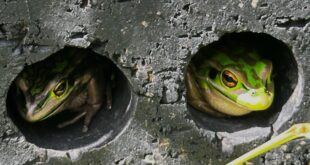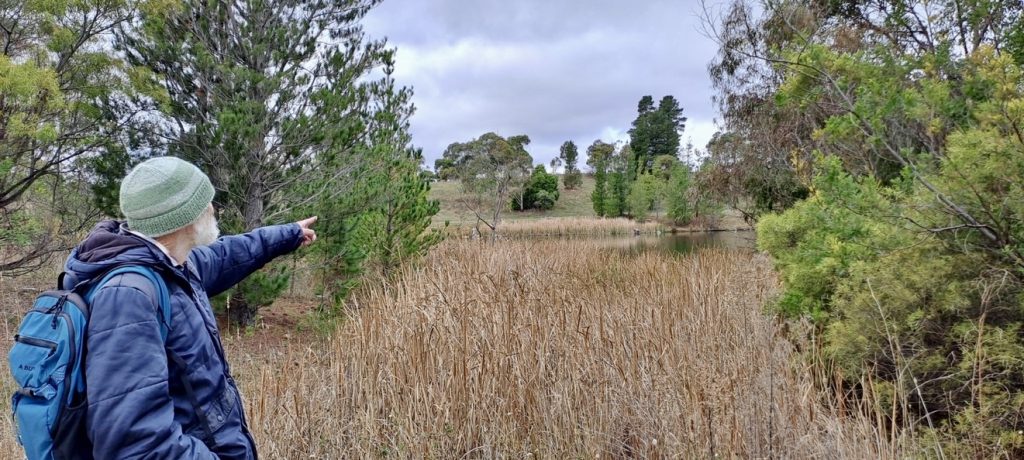
John Low pointing out birds on a walk around the Millpond.
Story and photographs by Tracie McMahon
This week, Tracie McMahon takes a walk with author John Low, a former Blue Mountains City Council Librarian, and now Portland resident, around the Millpond at The Foundations, Portland.
John and his wife retired to Portland in 2014 to be closer to their family. Their arrival coincided with the acquisition of the old cement works by The Foundations, and John found himself intrigued by the heritage buildings and network of limestone dams surrounding them.
In the early days, he would lead tours for history groups from the Blue Mountains, retelling the story of one of Australia’s oldest cement works. As the site rejuvenated, he found himself drawn to the dams and the birdlife they support.
Over time, John’s forays around the waterways became longer, and with it his connection to Portland. He remarks on a huge Eucalypt beside a row of recently restored workers’ cottages. It is a constant companion on his walks, like the Carrington chimney was during his time in Katoomba.
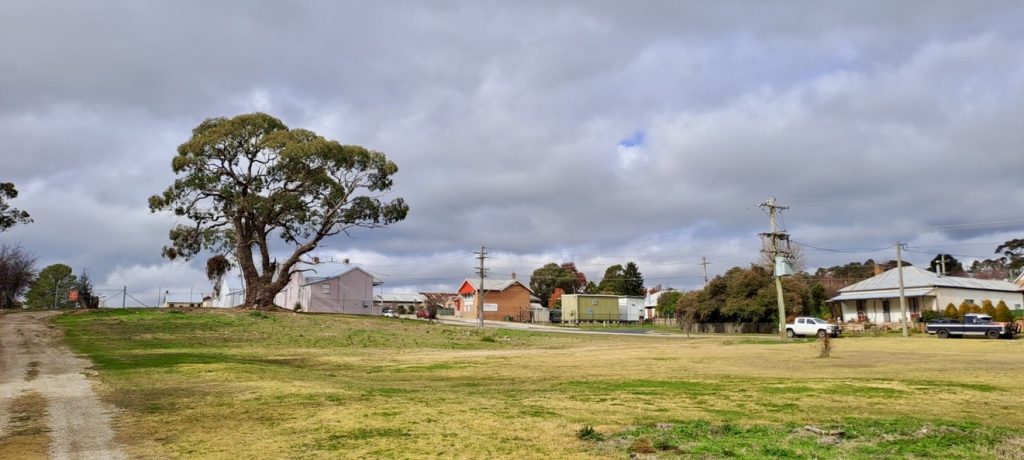
John’s marker tree on the edge of The Foundations.
John’s early publications focused on local history, retelling the ‘hidden stories’ of the Greater Blue Mountains. His latest publication Blue Mountains Byways includes origin stories for urban legends such as the famed ‘black panther’ and lesser known ‘Old Phil the poet’. ‘Old Phil’ was a widely published bush poet of the late eighteen hundreds who spent weeks at a time in a cave near Lithgow, his “thoughts turned to the heavens”, seeking the “quietude of life”.
Like Phil, John has found ‘quietude’ in the Lithgow area in poetry. For John it is Haiku – a precise Japanese form of poetry that evokes cycles and changes in the natural world.
duck dive—
measuring absence
in ripples
(J. Low published in Creatrix, WA)
John passes familiar people and their dogs every day as he wanders around the pond. There is a nod and a smile or words of shared delight in the water and its many treasures. He says this is what he is trying to capture with his poetry, to “distil the moments”. At Portland, he says he has found a place that brings these small points of connection to the fore. He tells a story of a parishioner at his local church taking great delight in the bricks of the building, which her grandfather made.
church bells –
a light shimmer
crosses the pond
(J. Low published in Echidna Tracks)
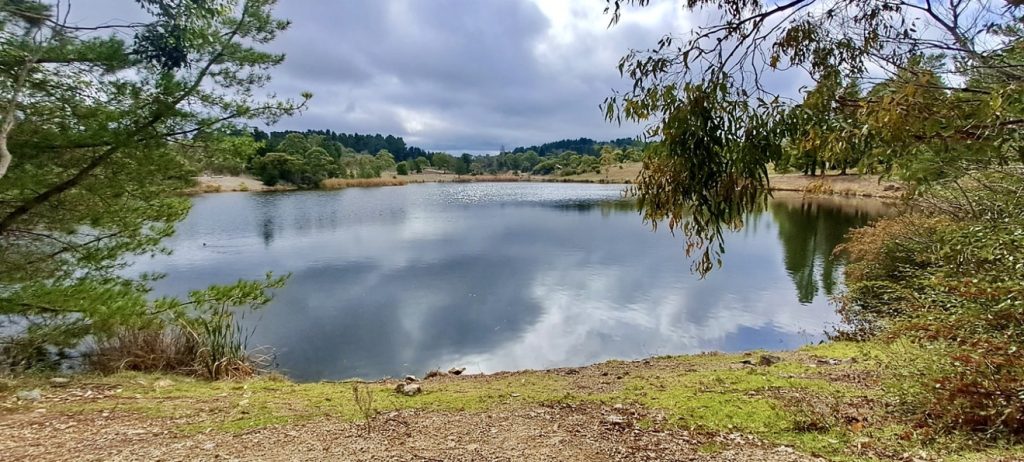
Shimmering surface of the Millpond, broken only by the wake of a waterbird.
John says there is now a significant community of birds connected to the waterways of The Foundations. He enjoys watching as the populations change with migration, some returning and multiplying as the area rehabilitates from its industrial past. On our circuit of the Millpond, we spot almost twenty different bird species, including Yellow-tailed Black Cockatoos, Musk Ducks, Eurasian Coots, and a White-faced Heron. The seventeen syllables of the Haiku below could describe our own walk.
cold sky
loping ahead of the rain
black cockatoos
(J. Low published in Echidna Tracks)
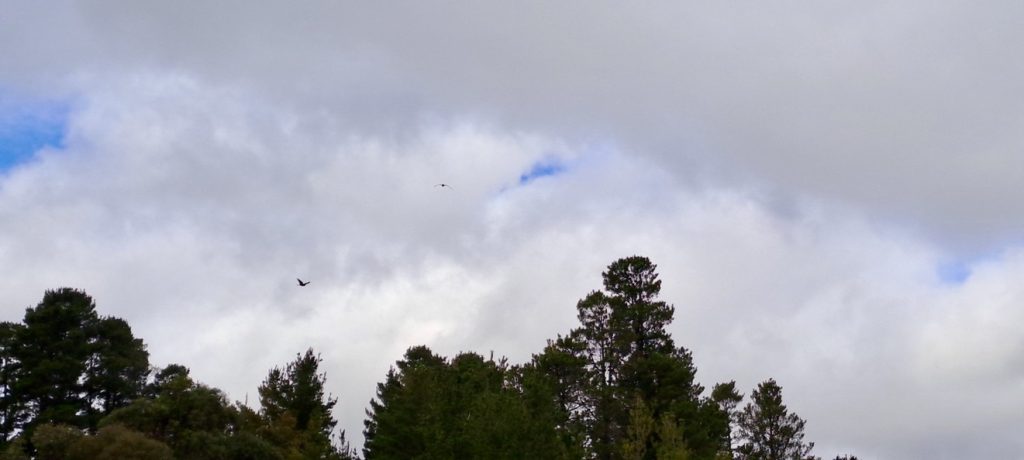
Yellow-tailed Black Cockatoos squark overhead.
As the clouds gather, we retreat to the Corner Café to continue our chat and warm up. Long after the coffee has drained, John realises he is late for another appointment. His enthusiasm for his adopted hometown is contagious and I decide to take another stroll around the Millpond. It is silent save for the lapping of the water and the splash of a cormorant. The sun breaks through heavy cloud sending down a few ‘god-rays’ that I will never capture on my phone, then departs on a gust of wind.
high wind –
sunlight shaken
from a raven’s wing
(J. Low published in Wales Haiku Journal)
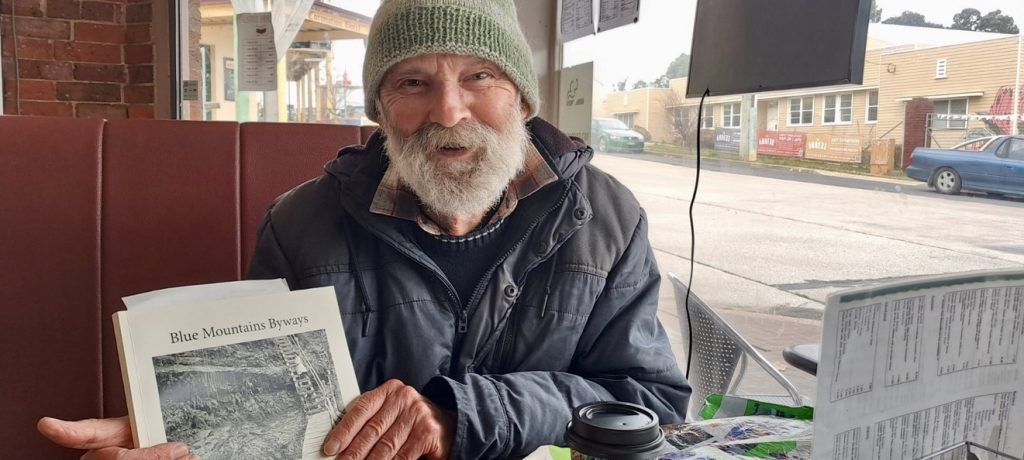
John Low in the Corner Café Portland with his book Blue Mountains Byways.
If you would like to visit the Millpond, it is open to visitors 7am to 7pm, 7 days per week and is accessible from behind St Stephens Church on Williwa Street. The Millpond is the smallest of three dams on the site, but the only dam currently accessible to visitors. It was stocked with trout three years ago as part of a joint initiative with Western Acclimatisation and NSW Fisheries, and fishing is also permitted. More information about the redevelopment of the Portland Cement Works can be found at https://thefoundations.com.au/ .
This story has been produced as part of a Bioregional Collaboration for Planetary Health and is supported by the Disaster Risk Reduction Fund (DRRF). The DRRF is jointly funded by the Australian and New South Wales governments.


